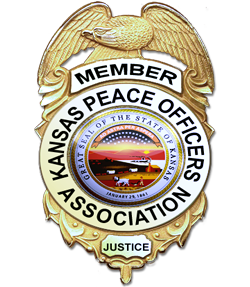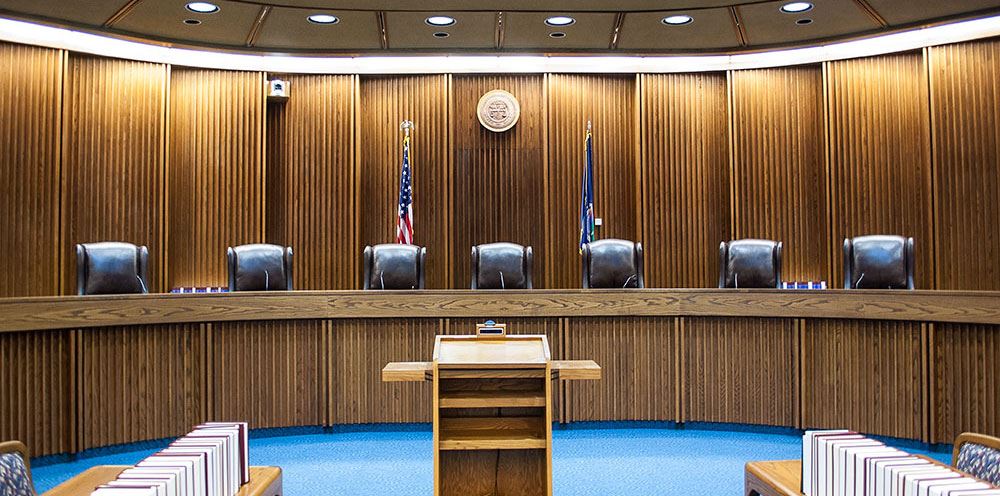The United States Supreme Court ended its 2020-21 term at the end of June. The Court handed down six street law enforcement cases. I have already reported to you on the Torres v. Madrid, (No. 19-292) case when it was issued in the Spring. Here are summaries of the other five cases:
Taylor v. Riojas
No. 19-1261
Qualified immunity continues a hot topic in the Big Court. Trent Michael Taylor was a Texas state prisoner that was in 2013 allegedly held naked for 6 days in multiple filthy, feces-covered and frigid cells. He sued prison officials but the district court (later affirmed by the federal circuit appeals court) held that under current case law a “few days” of such confinement was not unconstitutional and granted summary judgment to the officers. Further, should 6 days have been too many, the officers were still deserving of qualified immunity from liability because the law was not clear as to how many days counted as “a few days.”
The Big Court (7-1) vacated the lower courts’ decisions and sent the case back for further proceedings because “confronted with the particularly egregious facts of this case, any reasonable officer should have realized that Taylor’s conditions of confinement offended the Constitution.”
The Court was not finding liability, only ordering the lower courts to take another look under a more realistic standard.
Lombardo v. St. Louis
No. 20-391
Nicholas Gilbert was arrested in 2015 for trespassing and failing to appear on a traffic ticket. While in a PD holding cell, Gilbert attempted to hang himself. A number of officers responded and a lengthy struggle ensued. Officers finally got Gilbert into handcuffs and leg restraints. The problem was the officers held him face down for about 15 minutes as he continued to struggle. Gilbert quit breathing and died at a local hospital.
The family (through Jody Lombardo) sued the officers claiming excessive force. Interestingly, some of the evidence in the case showed previous local police training to not keep a already-restrained subject face down, and that such a position may cause a subject to continue to struggle to breathe rather than an actual “desire to disobey officers’ commands.” The trial court granted summary judgment to the officers concluding they were entitled to qualified immunity, and the Eighth Circuit Court of Appeals affirmed.
However, the justices (6-3) found that the lower courts had not given “careful attention to the facts and circumstances” of the case as is the test. “We express no view as to whether the officers used unconstitutionally excessive force” and the case was sent back to give the trial court “an opportunity to employ an inquiry that clearly attends to the facts and circumstances.”
Clearly another case where the Big Court is taking a second look at how the lower courts should review excessive force and grants of qualified immunity to government employees.
Caniglia v. Strom
No. 20-157
Edward Caniglia had a fight with his spouse and threatened to do harm to himself. The spouse later asked local police to check on Edward’s welfare. Officers met the spouse at the house, spoke to Caniglia, and he agreed to be taken by ambulance for an evaluation. Although the facts are disputed after that, once Caniglia left the scene the officers entered the home and removed two handguns.
Caniglia was released from care and asked for return of his firearms. The police refused. Caniglia sued claiming the officers entered his home without a search warrant. The officers responded that they entered the home based upon the “community caretaking” exception to the warrant rule. The officers believed that a 1973 Supreme Court case, Cady v. Dombrowski, involving the warrantless search of an impounded vehicle and the seizure of an unsecured firearm inside also covered the officers’ entry into the Caniglia home. Nice try, but no cigar.
The Big Court held (9-0) that vehicles are not homes. Homes are the most Fourth Amendment-protected location in the country. The community caretaking exception under Cady does not apply to a house. The case was sent back to decide whether some other exception to the warrant rule might apply under the particular facts such as consent, or exigent circumstances, or a state law mental health intervention law.
This case did not change any other existing warrant exceptions involving a home. It only holds that the police “community caretaking function” does not work for a house search.
Cooley v. United States
No. 19-1414
Joshua Cooley was parked on the shoulder of a Montana state highway within the boundaries of the Crow Reservation. A tribal police officer noticed the truck, thought it might need help, stopped and spoke with Cooley. During the event, the tribal officer noticed that Cooley was non-native, displayed DUI indicators, had two rifles on the seat and some white powder that was later identified as methamphetamine. Other officers including a federal Bureau of Indian Affairs arrived, Cooley was arrested, and he was later indicted on federal drug and gun charges.
Cooley moved to suppress the search arguing that tribal officers have no authority over non-Indians on a public road even when the road passes through a recognized reservation. The trial court agreed with Cooley. The Ninth Circuit Court of Appeals agreed with the trial court. The Big Court disagreed with both and reversed. The justices held (9-0) that “a tribal police officer has authority to detain temporarily and to search non-Indian persons traveling on public rights-of-way running through a reservation for potential violations of state or federal law.”
Kansas already provides for tribal officer jurisdiction under certain conditions and provisions as outlined in K.S.A. 22-2401a(3)(a).
Lange v. California
Arthur Lange was enjoying a nice California evening car ride by playing his radio loud and honking his horn at the world. Arthur’s pleasures drew the attention of a California Highway Patrol officer who, after following Arthur for a while, signaled with red lights for Arthur to stop. Instead, Arthur drove a little farther to his house stopping in the drive and walking into the garage. The officer followed.
Inside the garage, the officer detected DUI indicators, tested and questioned Arthur, and later arrested Arthur for DUI. Arthur asked the trial court to suppress what had happened in the garage since the officer did not have a search warrant or consent to have entered into the garage in the first place. The California courts sided with the officer holding that fresh pursuit of a misdemeanant categorically (always) provides exigent circumstances and thus an exception to the warrant rule. Following his conviction, Arthur appealed to the Supreme Court that “categorical” question.
The Big Court disagreed with California (9-0), albeit the justices did not agree as to the practical consequences. First, homes are the most constitutionally protected places in the country. Second, only rarely may the government enter a house without a warrant or consent.
Unlike the hot pursuit of a felon, misdemeanants vary widely in seriousness and therefore whether exigent circumstances are present should be determined on a case-by-case basis. Further, flight alone does not create an exigency. Instead, the new rule is FLIGHT + another factor, such as: imminent harm to others, threat to the officer or others, destruction of evidence, or later escape from the home.
In summary, the “flight of a suspected misdemeanant does not always justify a warrantless entry into a home. An officer must consider all the circumstances in a pursuit case to determine whether there is a law enforcement emergency. On many occasions, the officer will have good reason to enter . . . But, when the officer has time to get a warrant, he must do so – even though the misdemeanant fled.”
That said, the Court also stated that a “great many misdemeanor pursuits involve exigencies allowing warrantless entry;” that “in many, if not most, cases allow a warrantless home entry;” and, “no doubt that in a great many cases flight creates a need for police to act swiftly.” So, officers should be ready in the future to testify at more length based upon the particular case facts, and the officer’s training and experience, that a home entry was necessary.
Because California wrongly applied the “always” rule to misdemeanor chases, the case was sent back to the state court to determine in this particular case whether the officer acted reasonably. Under the facts of Arthur’s case, my money says that Arthur will need to buy a new toothbrush because he will be spending a few weekends as the guest of the state government.


